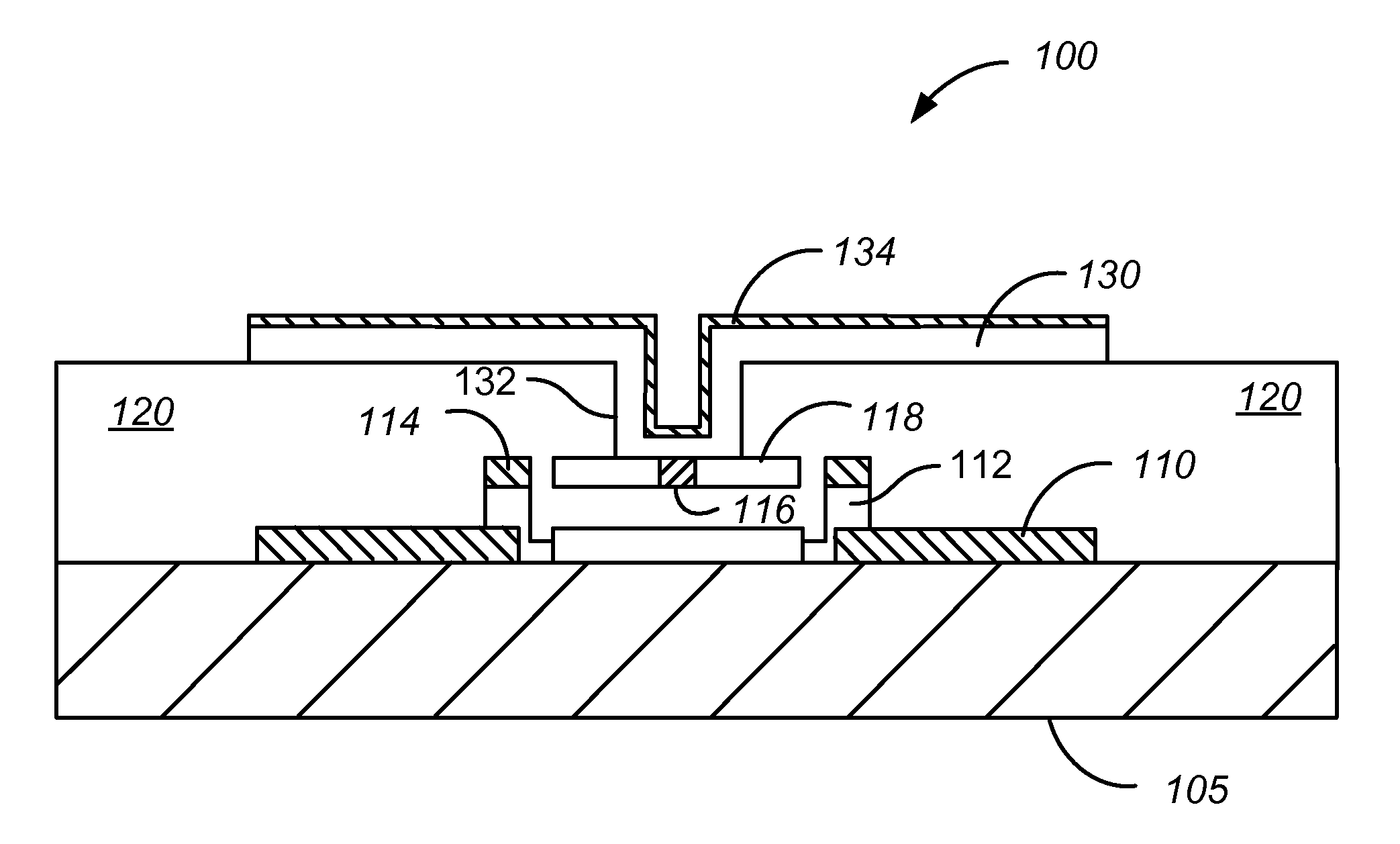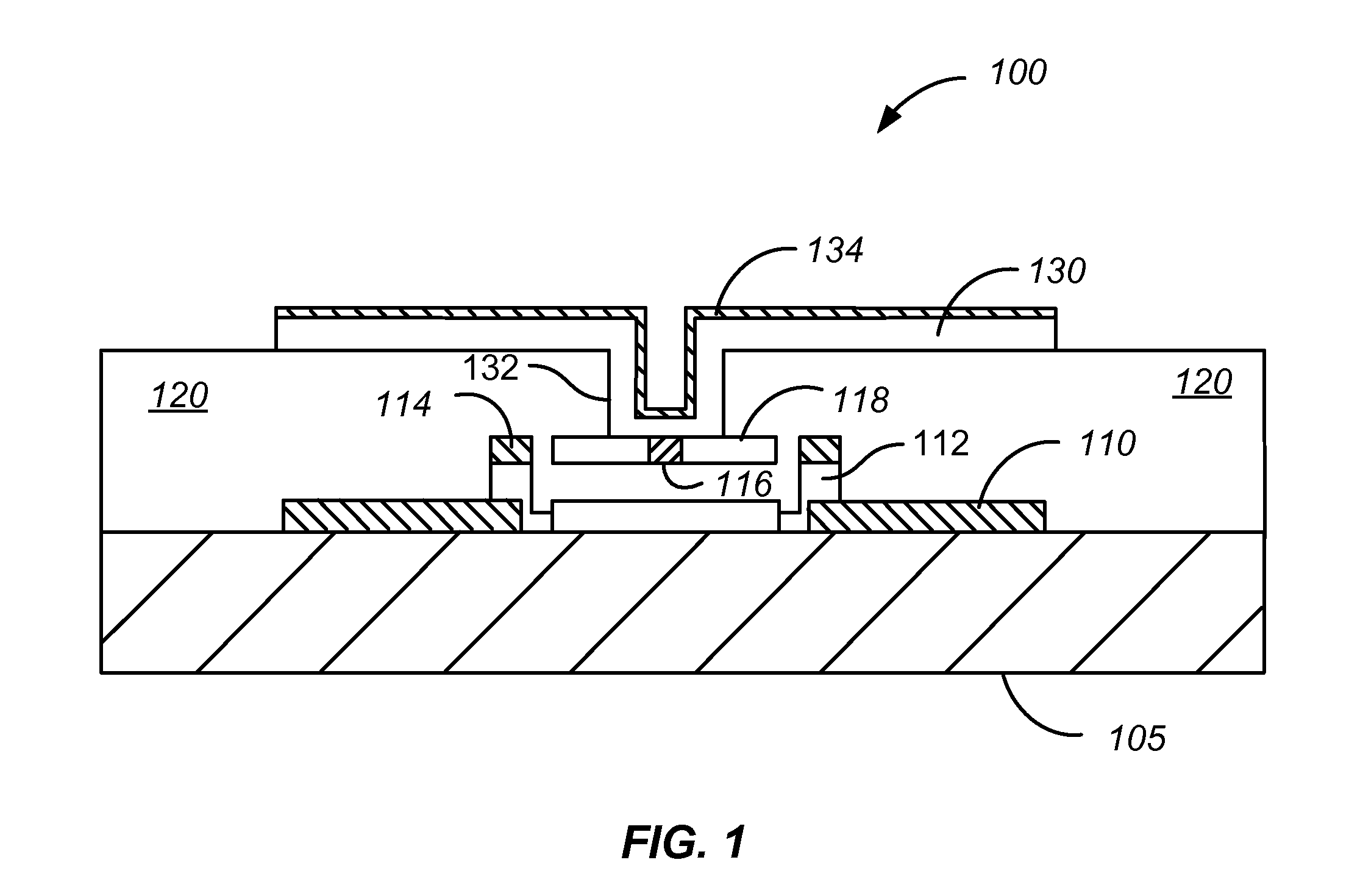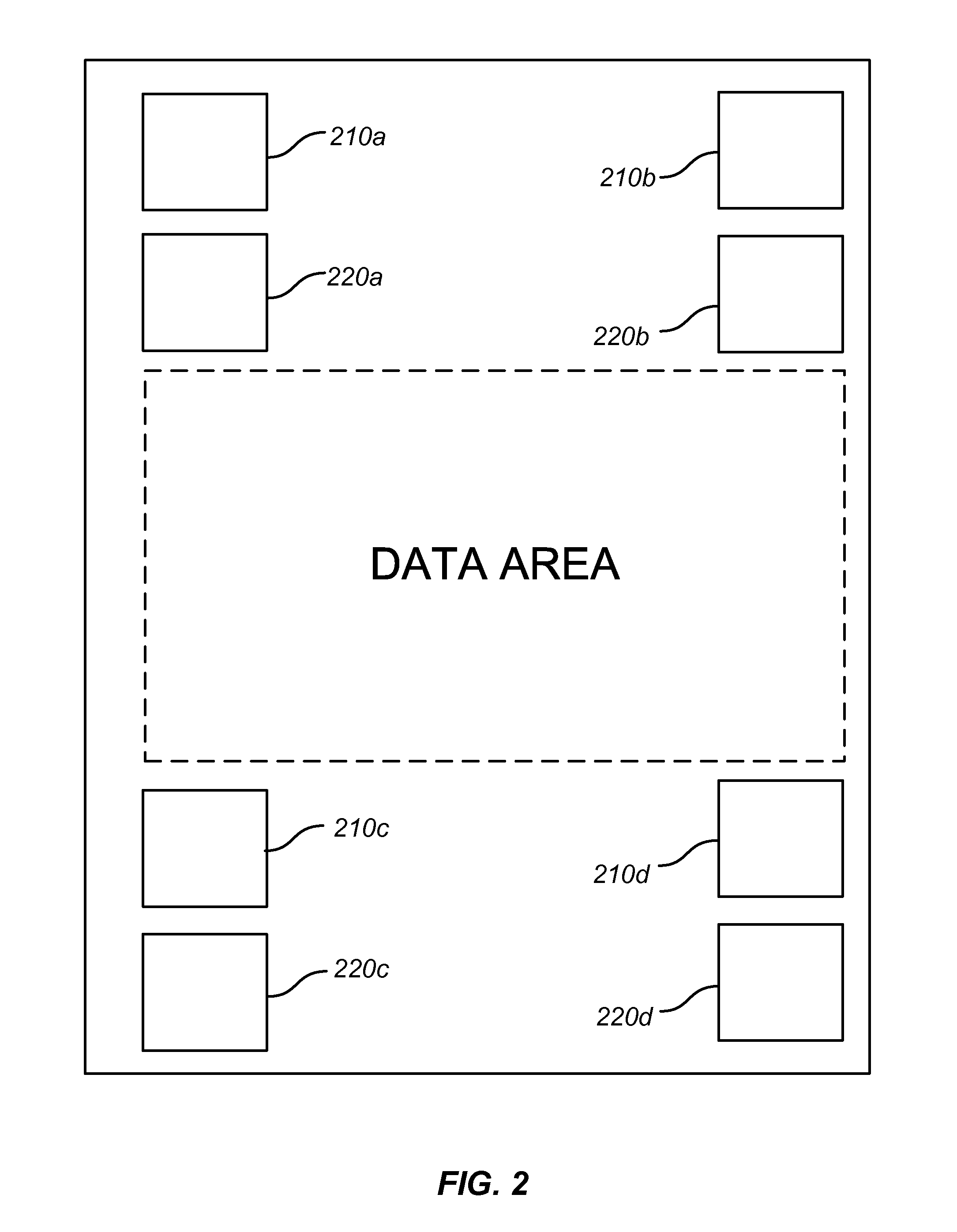Method and system for overlay correction during photolithography
a photolithography and overlay technology, applied in the field of manufacturing objects, can solve the problems of limiting the chemicals to which the structure can be exposed, affecting the quality of the image, so as to reduce the level of particles and potential defects, increase the wafer yield, and reduce the level of particle and potential defects
- Summary
- Abstract
- Description
- Claims
- Application Information
AI Technical Summary
Benefits of technology
Problems solved by technology
Method used
Image
Examples
Embodiment Construction
[0016]FIG. 1 is a simplified schematic diagram illustrating a semiconductor device at an intermediate stage of processing. As illustrated in FIG. 1, a micro-mirror 100 for display applications is illustrated at one portion of a process flow during the spatial light modulator (SLM) fabrication process. A CMOS wafer 105 is illustrated after a via formation process. Bottom electrode layer 110, which is formed using a low temperature PVD metal deposition process, is provided on the CMOS wafer 105. The bottom electrode layer is fabricated in an embodiment using deposition, photolithography, and etching processes. As an example, the bottom electrode layer 110 may include a multi-layer metal stack such as 1,000 Å of titanium nitride (TiN), 8,000 Å of aluminum, and another 1,000 Å of TiN.
[0017]Sacrificial photoresist material 120 is formed over the CMOS substrate and the bottom electrode layer. The sacrificial photoresist material 105 encapsulates an HDP insulator layer, 112 coupled to the ...
PUM
| Property | Measurement | Unit |
|---|---|---|
| roughness | aaaaa | aaaaa |
| temperature | aaaaa | aaaaa |
| temperature | aaaaa | aaaaa |
Abstract
Description
Claims
Application Information
 Login to View More
Login to View More - R&D
- Intellectual Property
- Life Sciences
- Materials
- Tech Scout
- Unparalleled Data Quality
- Higher Quality Content
- 60% Fewer Hallucinations
Browse by: Latest US Patents, China's latest patents, Technical Efficacy Thesaurus, Application Domain, Technology Topic, Popular Technical Reports.
© 2025 PatSnap. All rights reserved.Legal|Privacy policy|Modern Slavery Act Transparency Statement|Sitemap|About US| Contact US: help@patsnap.com



